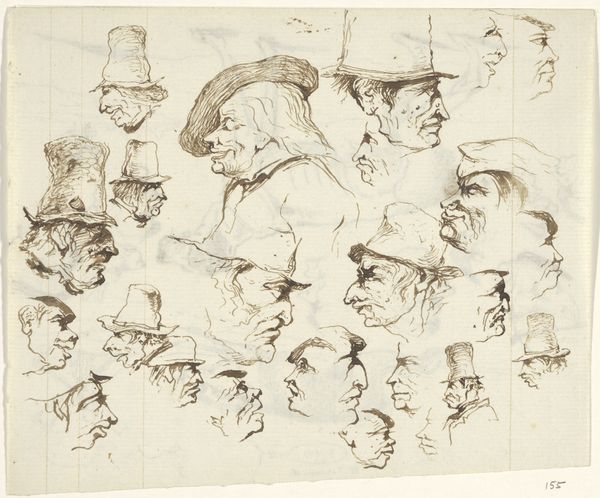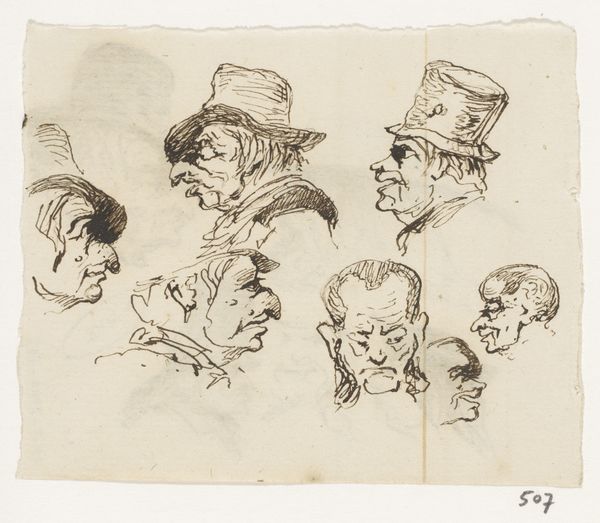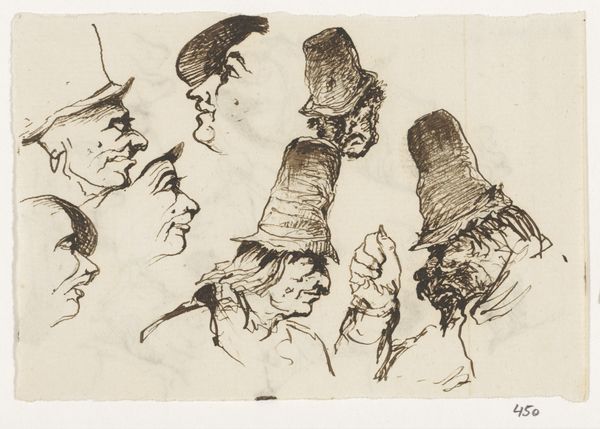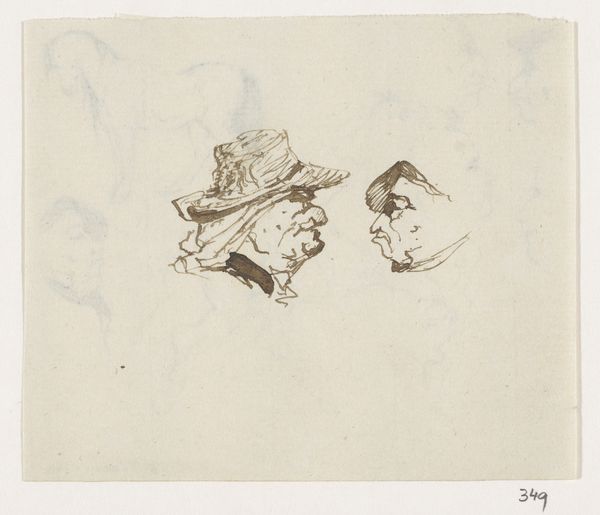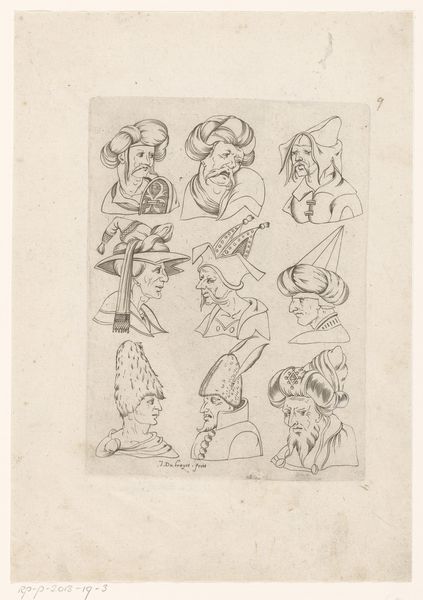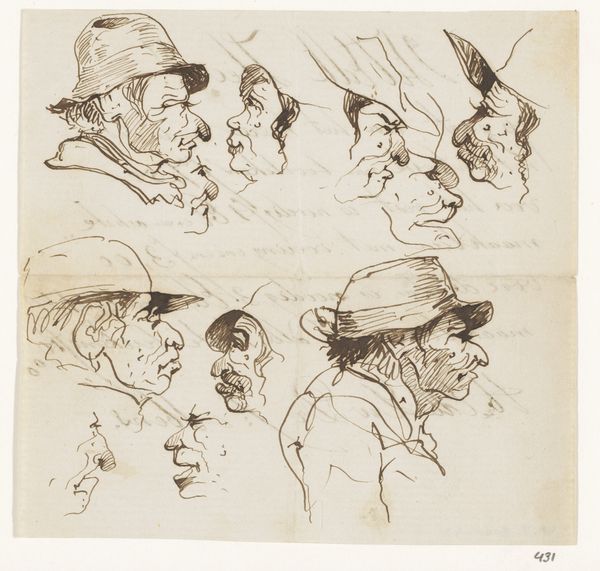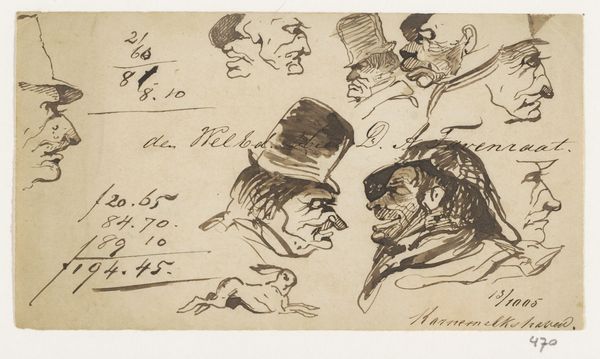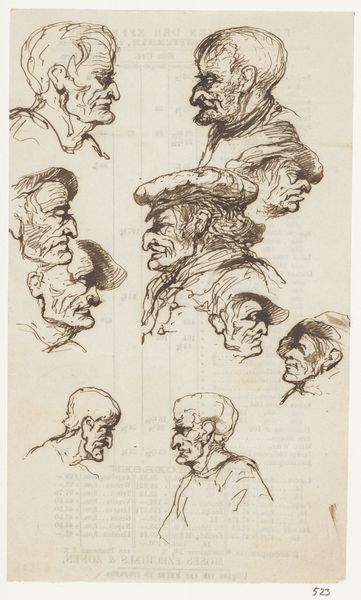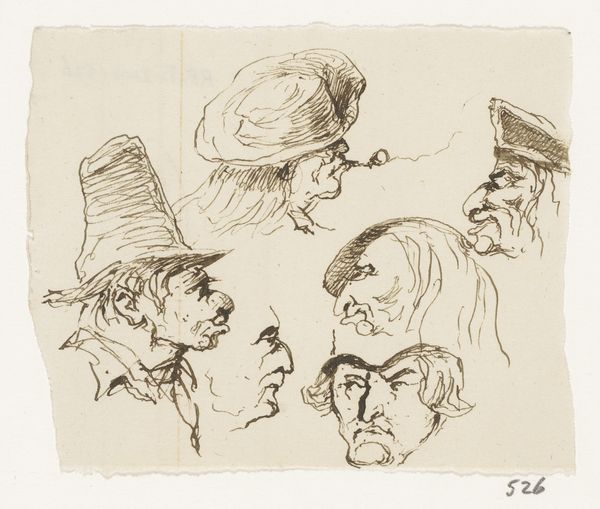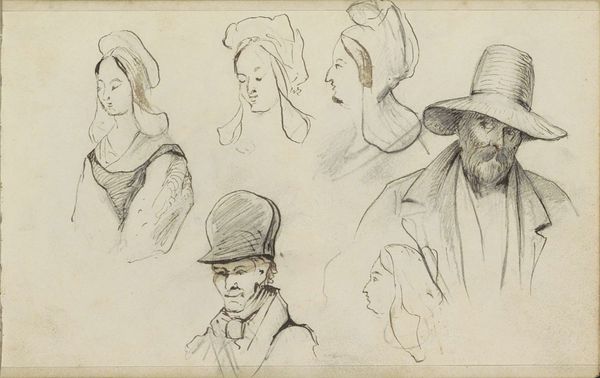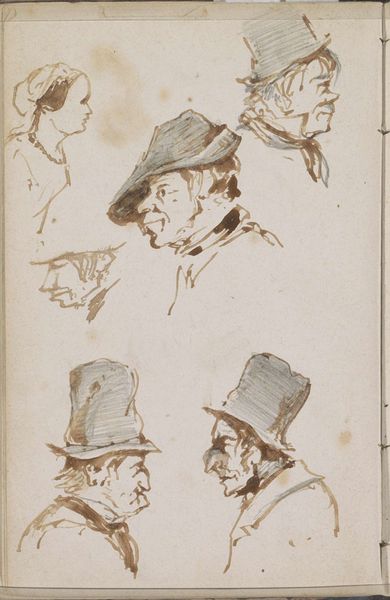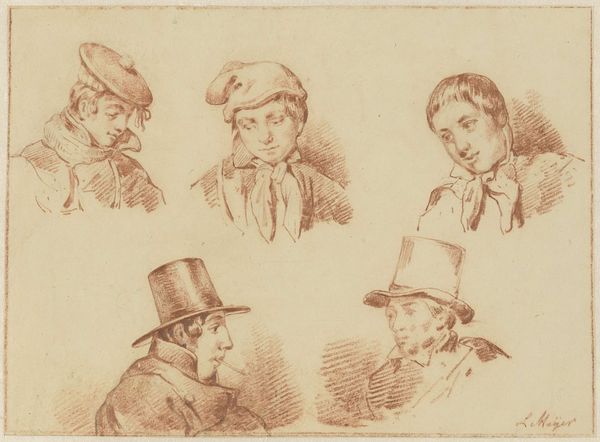
Dimensions: height 100 mm, width 152 mm
Copyright: Rijks Museum: Open Domain
Editor: So, this is “Heads, with top hat”, dating from around 1840-1880 by Johannes Tavenraat. It’s a series of caricature-like heads in pencil and ink. The varying intensity of the shading makes some figures jump out while others recede; what are your impressions? Curator: What strikes me is the manipulation of form and line to achieve characterization. Note how Tavenraat exaggerates specific features - noses, chins, hats – pushing them to the point of near abstraction. The strategic deployment of cross-hatching and stippling builds depth and volume, even within the confines of a primarily linear medium. The varying pressure of the pencil, that’s key, right? Editor: Absolutely, I hadn’t thought of it that way. The weight of the lines seems almost to sculpt the faces. But how do these techniques contribute to the overall meaning? Curator: Consider the top hat. Its size and shape are not merely representational; they become structural elements. Semiotically, it points to the man as sign or symbol – what do we learn from that symbol in combination with the facial caricature? It’s through the formal relationships - the contrast between the delicate rendering of one face and the bolder strokes of another - that Tavenraat critiques societal norms or individual eccentricities. Editor: It's fascinating how focusing on form reveals deeper meaning. It challenges the surface level reading. Curator: Precisely. It forces us to move beyond simply recognizing a face and consider the very act of representation, of making meaning through visual language. This simple piece raises profound questions, I think. Editor: Thanks for pointing that out, I'll never see art the same again! Curator: A pleasure!
Comments
No comments
Be the first to comment and join the conversation on the ultimate creative platform.
